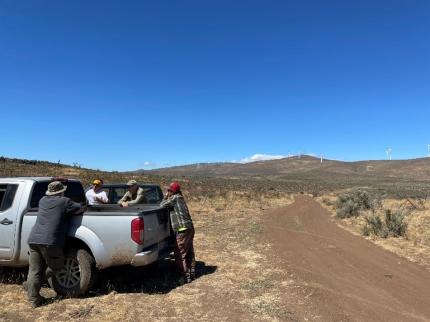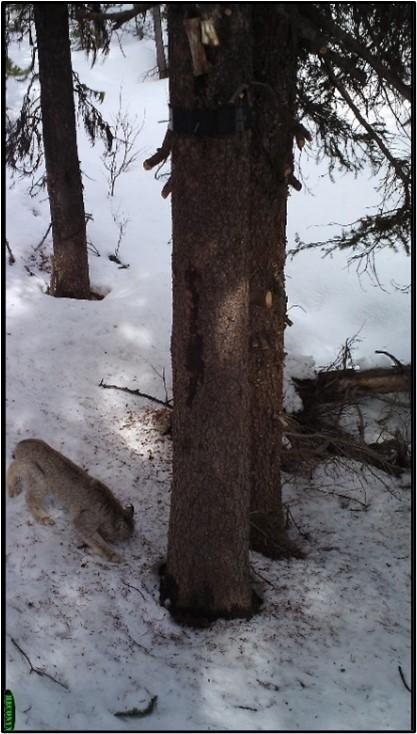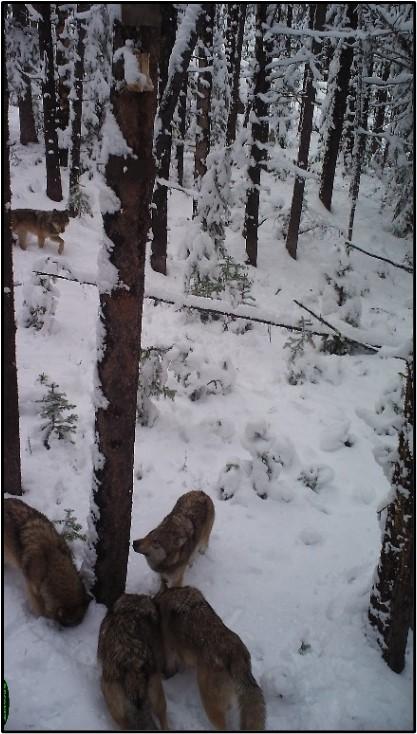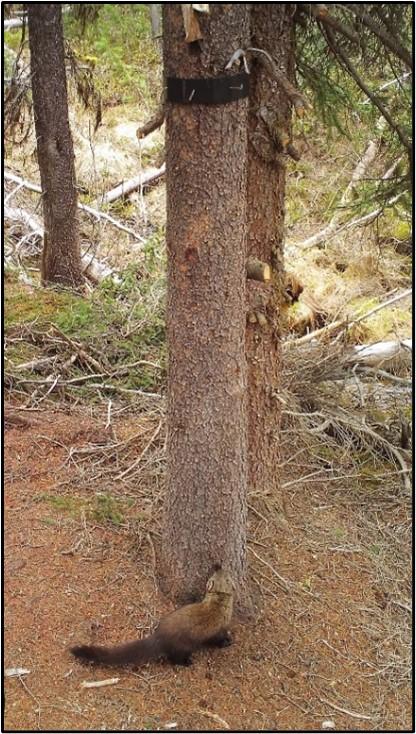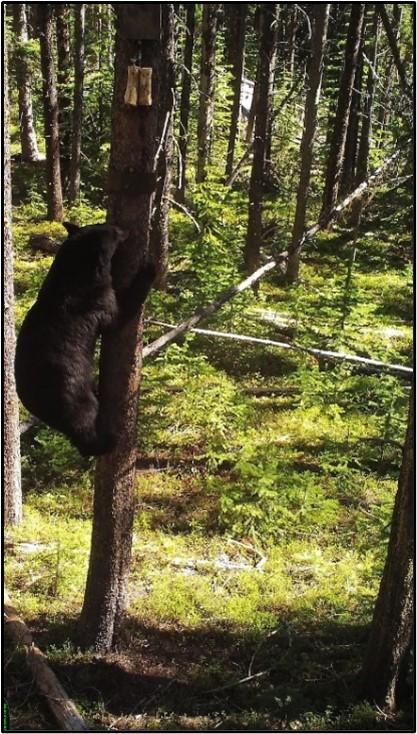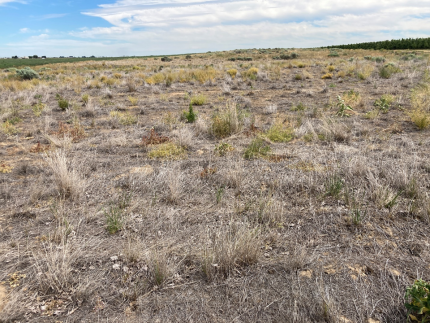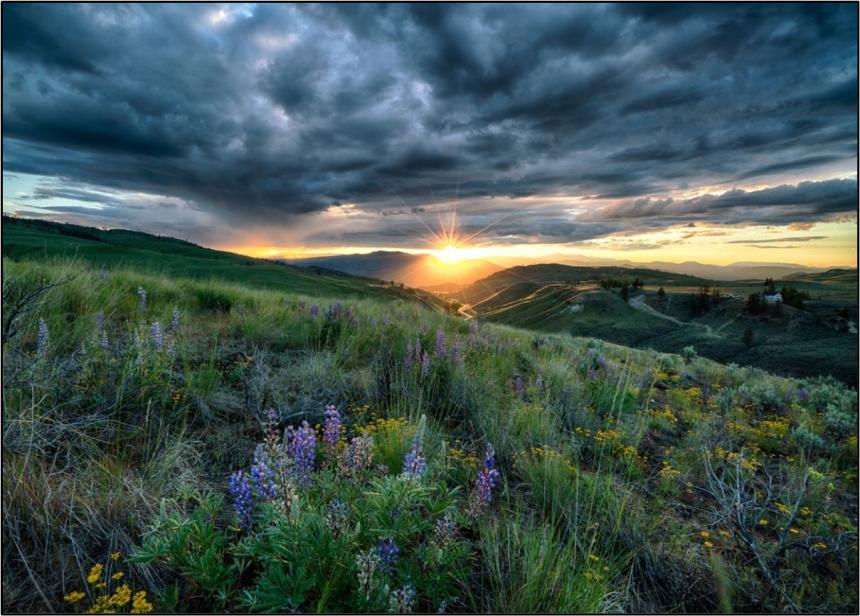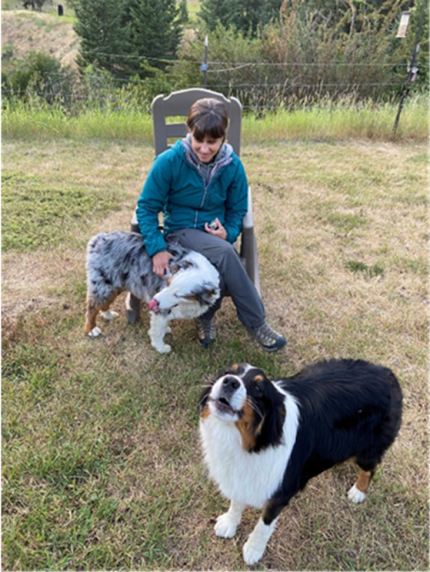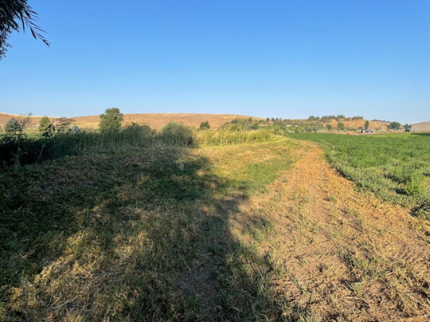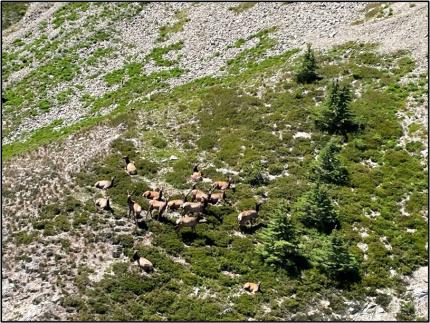Biweekly report Aug1-15 2024 - Region 1 (Eastern)
Managing Wildlife Populations
Prairie Grouse: Biologists Lowe and Brinkman attended the Western Association of Fish and Wildlife Agencies 34th biennial Sage and Columbian Sharp-tailed Grouse Workshop in Wenatchee. Lowe and Brinkman assisted with setup and staffing the registration desk during the first two days of the meeting. Both biologists joined during the field trip day to tour the area around Wenatchee where the group visited various habitat restoration sites. Attendees learned about different programs available to landowners for maintaining sage grouse habitat, viewed known lek sites for both sage and sharp-tailed grouse, and checked out a riparian restoration project on Bureau of Land Management (BLM) property near Jameson Lake.
Chronic Wasting Disease (CWD) Efforts: Acting Private Lands Biologist Heitstuman responded to the CWD Hotline and recovered a sample reported by the Washington Department of Transportation. Heitstuman relayed information to other employees for CWD sampling opportunities in their areas of responsibility. Heitstuman reviewed the current plan for management of CWD with the recent positive case in the Spokane area.
Chronic Wasting Disease: Wildlife Conflict Specialist Harris attended the Chronic Wasting Disease tactics meeting to discuss CWD operations in District 2. Harris also spoke on the phone with a Spokane landowner regarding a sick deer on their property. Harris directed the landowner to fill out and submit a CWD report on the Washington Department of Fish and Wildlife (WDFW) website. Harris submitted a CWD sample that was collected by a hunter that harvested a cow elk with a damage tag in GMU 124.
County Fair Circuit: Natural Resource Technician Moberg registered WDFW booths at the Walla Walla, Columbia, and Garfield County fairs to provide outreach on the Chronic Wasting Disease program. The Walla Walla County fair will be August 28 - September 1, the Columbia County fair will be September 6 - September 8, and the Garfield County fair will be September 13 - September 15.
Deer Surveys: Biologist Brinkman conducted a pre-hunt roadside deer survey in Spokane County. This was the first of many roadside deer surveys that will be conducted over the next two months by WDFW staff and volunteer members. These surveys are conducted for around two to three hours in the morning or evening when deer are most active. The surveys consist of driving routes through different parts of the district, recording the number of individuals and composition of each group of deer observed (i.e., ratios of buck to does and fawns to does). When compared with previous years’ surveys and combined with harvest data, these surveys can help indicate population stability or upward/downward trends.
Malnourished Deer: Private Lands Biologist Nizer and Natural Resource Technician Rumiser received information from a local that he had a sick looking deer on his property. Nizer and Rumiser went to the property to look for deer but there was no sign. The reporting party sent a photo of the deer and Nizer showed Wildlife Conflict Specialist Harris to see what could be done. Unfortunately, there was nothing that could be done for the deer and nature will have to take its course.
Chronic Wasting Disease Sampling: Natural Resource Technician Edmondson and Keeling went to collect a whitetail doe head from a landowner who had harvested the deer via a damage tag near the Daisy Boat Launch and brought the head back to the Colville office to collect a CWD sample.
Natural Resource Technician Edmondson accompanied Wildlife Conflict Specialist Samsill to meet with a landowner just outside of Colville to collect two cow elk heads that had been harvested earlier in the week via landowner kill permits. Those heads were brought back to the Colville office and CWD samples were collected.
Grizzly Bear: Due to concerns related to grizzly 1068 milling around the same stand of timber (per GPS) and in relative proximity to human structures, Natural Resource Technician Keeling and Edmondson assisted Wildlife Conflict Specialist Bennett with locating the bear. Keeling and Edmondson learned the basics of tracking via telemetry and were able to locate two scat piles while assessing the habitat on foot. In addition to thimbleberries and Oregon grape being plentiful, the scat showed no presence of human foods or garbage and appeared to almost completely consist of berries. While examining the scat, the bear’s signal was heard on the telemetry equipment, prompting the team to return to the truck and leave the area.
Providing Recreation Opportunities
Rainbow Lake Algae Bloom: Rainbow Lake continues to have an algal bloom. Bluish plaques appeared again this week and photos were sent to the Columbia County Health Department. Wildlife Area Manager Dingman continued researching treatment options and worked to get an internal meeting set up to discuss how to move forward.
Water Access Areas Management: North Region 1 Water Access Area Manager Dziekan met with Mr. Prettyman of Prettyman’s Septic Service at Fan Lake and Loon Lake Water Access Areas, to empty the vault toilets. It took about an hour at each site. The process started with removing garbage with litter pickers, shovels, and rakes. Bob then pumped the vault liquid level down a bit, which freed up more trash that was trapped at the top of the vault and the pair then pulled that garbage out. During the process, about a dozen bags of garbage totaling 300 pounds came out of the two vaults. This trash was promptly taken to the dump, then Dziekan bleached and washed the dump trailer. It’s sad and frustrating that the public sees Water Access Area toilets as a convenient place to dump all sorts of garbage.
Rainbow Lake Stump Removal: The Yakima Construction Shop was on-site this week to complete the stump removal from the dam on the north end of Rainbow Lake.
Providing Conflict Prevention and Education
KXLY Interview: Wildlife Conflict Specialist Harris met with a reporter from KXLY to interview for a story on being bear aware and safe recreation practices while huckleberry picking.
Asotin Aggressive Hawk: Wildlife Conflict Specialist Wade received a report of five redtail hawks attacking a city of Asotin homeowner’s dog. The reporting party (RP) explained that the five hawks attacked their small dachshund every time the dog is let out. Wade discussed some possible deterrents that may help address the issue and the RP’s constitutional right to protect their property. Wade will follow up with the RP next week and see if any of the deterrents were effective.
Conserving Natural Landscapes
New UTV Sprayer: Wildlife Area Manager Finch and Wildlife Area Assistant Manager Wagner picked up a new custom-built sprayer from Ag Enterprise in Cheney, Washington for the other UTV at the wildlife area. Finch and Wagner also went to the Reardan Audubon Wildlife Area to hoe some larger weeds in the parking lot, replace the toilet paper in both bathrooms, and pick litter. Wagner also took the sprayer up to spray weeds along the trail and parking lot.
Forest Habitat Regeneration: Sherman Creek Wildlife Area Assistant Manager Palmer checked on the half-section parcel of LeClerc Creek Wildlife Area this week. He noted that it’s nice to see the fruits of all the forest restoration work done at West Branch LeClerc Creek Wildlife Area in the last several years. Various portions of the parcel were commercially thinned to remove lodgepole pine and grand fir, treated with prescribed fire, and subjected to mechanical removal of lodgepole pine. The portions were then replanted to western larch and western white pine. Natural regeneration of ponderosa pine and Douglas fir has occurred, and evergreen ceanothus has really taken off this year. Much of this improvement is a great response to the prescribed burning from a few years ago.
Duck Stamp: Private Lands Biologist Nizer Natural Resource Technician Rumiser mowed a marsh with the marshmaster to accomplish goals for the Duck Stamp funded project.
Fishtrap Toilet Damage: This week Area Manager Dziekan and Natural Resource Technician Brant made the rounds in District 2. A stop was made at Fishtrap Access Site to find someone had backed into the toilet enclosure so hard that it moved one of the toilets up off the base. Dziekan reached out to the locals to see if anyone saw anybody that could have caused this damage.
Chief Joseph Wildlife Area Foodplots: Elk continue to heavily use irrigated food plots at the Chief Joseph Wildlife Area. The alfalfa has been grazed right back to the ground. The sorghum/sunflowers are also being heavily used by elk. Numerous small birds are using the sorghum where there are heads forming that have not been eaten by elk.
4-O Ranch Wildlife Area Gates: Wildlife Area staff members began gathering materials and tools to repair burned and damaged gates on the 4-O Ranch Wildlife Area. Though still officially closed, it won’t be long before the public will be allowed to travel Couger Creek and Grouse Flats roads where our damaged gates are at. On Thursday, Natural Resource Technician Nielsen, Wildlife Area Manager Dice, and Natural Resource Technician Hammons spent all day installing a new 10” x 10” steel post to re-hang the McNeill gate on. The post was set in concrete. The rental mixer that was brought down failed to operate and concrete had to be mixed by hand in five-gallon buckets and an old salt tub found in one of the nearby barns. It took nearly a full pallet of concrete to finish the job. The next step is to weld the gate to the post and set the other post where the lock and pin will be installed. Several other gates need the same type of repair. All repairs and replacements will be done with all steel materials.
Conducting Business Operations and Policy
General Facilities and Equipment Maintenance and Repairs: Sherman Creek Wildlife Area staff members kept sprinklers running and lawns mowed at headquarters. Wildlife Area Assistant Manager Palmer swept out dirt and cobwebs at the Wildlife Area headquarters, for a fresh, clean facility with which to greet new employee Graves later this month.
Other
Fire at Swanson Lakes Wildlife Area: This week a fire was reported by the fence crew at the Swanson Lakes Wildlife Area. Both Wildlife Area Manager Finch and Wildlife Area Assistant Manager Wagner were in Cheney, Washington when the page went out from the sheriff’s office. Finch stayed in contact with local fire fighters and was advised that the fire would soon be under control due to the road location and the direction of the wind. The fire started along a WDFW fence-line and moved to the south towards the road which burnt, mostly on the Bureau of Land Management (BLM). Only a few square feet of property were burnt on WDFW land.
Newman Lake Issue with Floating Docks: Access Manager Dziekan received a report this week of a person who fell between a large gap in between the docks. Dziekan and Natural Resource Technician Brant went out to Newman Lake to identify the issue with the wide gap in between the docks. As was suspected by Dziekan, there were bolts missing that held the docks together therefore widening the gap between the docks. Dziekan and Brant brought a magnet with them on a rope and were successful at retrieving one of the bolts and nuts but had to make a trip into Spokane to a company called “Fasteners” to get the additional hardware to bolt the docks back into place.









































